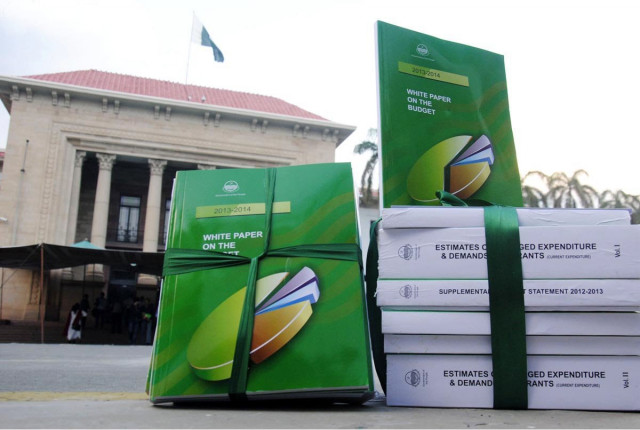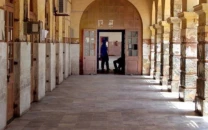View point: ‘Islamabad to blame for Punjab’s lean years’
16 more services added to the list of services liable to sales tax.

The White Paper says the national economy had grown by an average of only 2.94 per cent in the last five years, which it said, was the lowest average for five years in the history of Pakistan. PHOTO: Online
The executive summary of the White Paper document of the budget 2013-2014 blames the federal government for the power crisis and terrorism- two major reasons to have had negative impact of economic growth.
Rs20 billion has been allocated in the 2013-2014 budget for energy sectorprojects.
The federal government is also blamed for its failure to meet revenue targets, making Punjab suffer a shortfall of about Rs82 billion in its share of the federal divisible pool during the last fiscal year.
The White Paper says the national economy had grown by an average of only 2.94 per cent in the last five years, which it said, was the lowest average for five years in the history of Pakistan. Growth in the Punjab had been even slower due to more power outages than other parts of the country.
Increasing tax revenue
It said that the tax to the GDP ratio in Pakistan was “dismally low”. To deal with it, the Punjab government now plans to widen the tax base, rationalisation of the rates of existing taxes and improvement of tax collection system.
The Provincial Revenue Authority collected Rs30 billion as sales tax on services in the first 10 months of its operation. This is expected to reach Rs37 billion by the end of the current fiscal year. The government plans to further widen the scope of this tax by adding 16 more services in the list of services liable to sales tax.
Another important tax reform this year was the provision of agriculture income tax. The summary said that the Punjab government recognised that agriculture income tax was the demand of equity and was widely considered a must for an economy to flourish. It would be enforced in the 2013-2014 financial year.
Through the five years of crisis, the summary says, the Punjab government had avoided heavy borrowing or taxing the poor. The total debt liability of the Punjab government is 51 per cent of its general revenue receipts. The annual debt retirement liability is around 6.5 per cent of the provincial revenue.
Development initiatives
The development initiatives planned for 2013-2014 focus on the poor segments of the society to ensure inclusive “pro-poor development interventions”, including provision of livestock to the rural poor, subsidy on wheat, subsidised bus transport system in major cities, Daanish schools, Punjab Education Endowment Fund, low income housing schemes, health insurance card in four pilot districts, Aashiana Housing Scheme and subsidy on solar tube wells. Most of the budget in the education and health is traditionally spent on salaries. In order to counter this trend, the Punjab government has allocated dedicated funds for 2013-2014 to increase non-salary expenditure in these sectors.
Published in The Express Tribune, June 18th, 2013.



















COMMENTS
Comments are moderated and generally will be posted if they are on-topic and not abusive.
For more information, please see our Comments FAQ